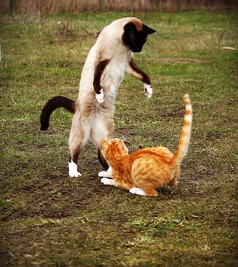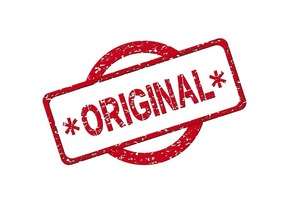 As discussed in the first part of this series, when first faced with a dispute, band members should carefully review the group’s governing agreement (usually a band partnership agreement, operating agreement, or set of bylaws, depending upon the group’s structure), assuming one exists. Among other things, this document should include a procedure for resolving disputes, and specify the members’ rights and obligations to the group and each other if a dispute arises. Unfortunately, many groups never get around to discussing — let alone preparing — a written agreement. In those instances, state law will dictate the parties’ rights and duties. Laws and their application can vary greatly among the states and, even in a single state, the specific legal rights and obligations of individual members might differ greatly from one entity type to another (e.g., partnership, limited liability company, or corporation). Further complicating matters, all disputes are fact-based. Although two groups might have similar types of disputes, generally (e.g., the lead guitarist decides he doesn’t like the drummer any more — trust me, it happens), rarely do two isolated disputes stem from exactly the same facts or circumstances (e.g., the guitarist has evidence that the drummer is embezzling from the band vs. the guitarist’s girlfriend is “pretty sure” the drummer winked at her when the guitarist wasn’t looking). Thus, determining and applying the relevant law to a particular dispute can be complex and is a concept beyond the scope of this article. Group members who find themselves in a dispute without the benefit of a band member agreement owe it to themselves and their families to consult with independent legal counsel before taking actions that might impact their rights (including potential future income) or obligations (including potential expense and/or liability to the group, other members, third parties with whom the band has existing agreements, etc.). In the next installment, I’ll discuss possible options for moving forward toward resolution.
0 Comments
 Throughout history, musical groups have formed, broken up for various reasons, sometimes reformed (in various incarnations), and frequently broken up again. It happens at all levels of the music industry, from your brother's garage band to the Beatles, Sonny and Cher, and the Eagles (multiple times). I'm neither a divorce lawyer, nor a marriage counselor, so don't ask me why it happens, it just does. Fortunately, not all disputes lead to a breakup and many issues that groups frequently encounter can be resolved through good faith discussion. However, should the members reach an impasse, the suggestions discussed in this series can help move the members toward resolution, even if the ultimate "resolution" is dissolving the group. Above all, the members should not ignore the issue, particularly if it is time-sensitive or affects the rights of outside parties (e.g., existing contracts for future services). Even issues that are not specifically time-sensitive deserve timely consideration. Aside from the potential negative impact on the group's business, leaving an issue open for an extended period can foster suspicion and animosity among members. Also, issues that might seem insignificant to certain members might be extremely important to others. Members should keep the lines of communication open and strive to maintain civility. Assuming one exists, members should carefully review the band partnership agreement (or, if the group is formally organized as a limited liability company (a/k/a an "LLC") or corporation, the operating agreement or bylaws, respectively) for guidance on the specific issues in dispute, as well as the procedure for dispute resolution. Please see my previous article on band agreements for more information. It might also be necessary to consult applicable state statutes to fill any gaps not provided for in a written agreement or if there is no agreement. In the next installment, I'll discuss some more formal steps for dispute resolution.  As discussed in previous posts, the importance of properly clearing a mark before using it in commerce cannot be overstated. Indeed, failing to investigate the availability -- and registrability -- of a desired mark can lead to costly and time-consuming problems. Because most publicly known trademark cases tend to involve infringement, most individuals and businesses recognize the danger associated with infringing another party's mark. However, the concept of trademark dilution is foreign to many. In general, trademark infringement requires the unauthorized use of an existing mark (or a similar mark), which causes "likelihood of confusion" among consumers as to the source of goods or services (i.e., a consumer makes a purchase decision based on a particular brand, thinking he is purchasing the item from the intended source, when in fact it comes from a different, and typically substandard, source). Although each infringement case is unique, generally, a mark can only receive protection against competing and commonly associated goods or services. For example, if one uses the mark ACME to identify jet-powered roller skates, the owner of the mark likely could not prevent another party from using ACME to identify jelly beans. The owner should, however, be able to prevent another party from using ACME to identify jet-powered skateboards, based on the likelihood of consumer confusion. Thus, trademark infringement requires a showing that the public is likely to confuse an infringed party's goods or services with the infringing party's goods or service. Unlike infringement, trademark dilution is based on the idea that any use of a very well-known mark -- even to identify goods and services unrelated to those connected with the original mark -- will weaken or “dilute” the original mark. Broadly speaking, dilution occurs when a mark is "tarnished" or "blurred" because of the second use. Tarnishment refers to the stigma arising from the public's inaccurate association of a particular mark with another party's questionable or inferior goods or services. In other words, the perception that the mark is being used to identify certain goods or services causes damage to the reputation and goodwill of the original mark and its owner. Blurring is a broader concept, under which the mere use of a mark to identify any goods or services besides those offered by the mark's owner causes the mark to lose its distinctiveness and definitive association with the original goods or services. Although many states had antidilution statutes at the time, trademark dilution became a matter of federal law when Congress passed the Federal Trademark Dilution Act of 1995 (the "FTDA"), codified at 15 U.S.C. § 1125(c), which was amended extensively in 2006 with the passage of the Trademark Dilution Revision Act (the "TDRA"). Under the FTDA and many similar state statutes, only "famous" marks are eligible for antidilution protection. Thus, the threshold question is whether a particular mark is "famous." Generally, for a mark to be considered famous, it must be very strong and broadly known. Under the TDRA, famous marks are those that are "widely recognized by the general consuming public of the United States" as an indication of the source of particular goods or services. In other words, a mark must be famous in general across the country, and cannot be limited to a particular geographic region or type of consumer (e.g., purchasers of automobiles). Few marks meet this strict standard for federal protection. However, under some state antidilution statutes, a mark might be subject to antidilution protection based on so-called "niche fame." The issue must be examined in the context of a particular mark, its specific use, and the applicable state law. Although trademark dilution protection extends to far fewer marks than infringement protection, it is an important concept for businesses and individuals to consider, particularly during the mark selection process. The potential for dilution of famous marks is one of several factors that trademark lawyers consider during the trademark clearance stage. |
AuthorL. Kevin Levine is the founder of L. Kevin Levine, PLLC (go figure), a boutique entertainment, copyright, trademark, and business law firm in Nashville, Tennessee. A lifelong musician who grew up in his family's music store, it was inevitable that Kevin would build his legal career in entertainment and business. Archives
June 2016
Categories
All
|


 RSS Feed
RSS Feed